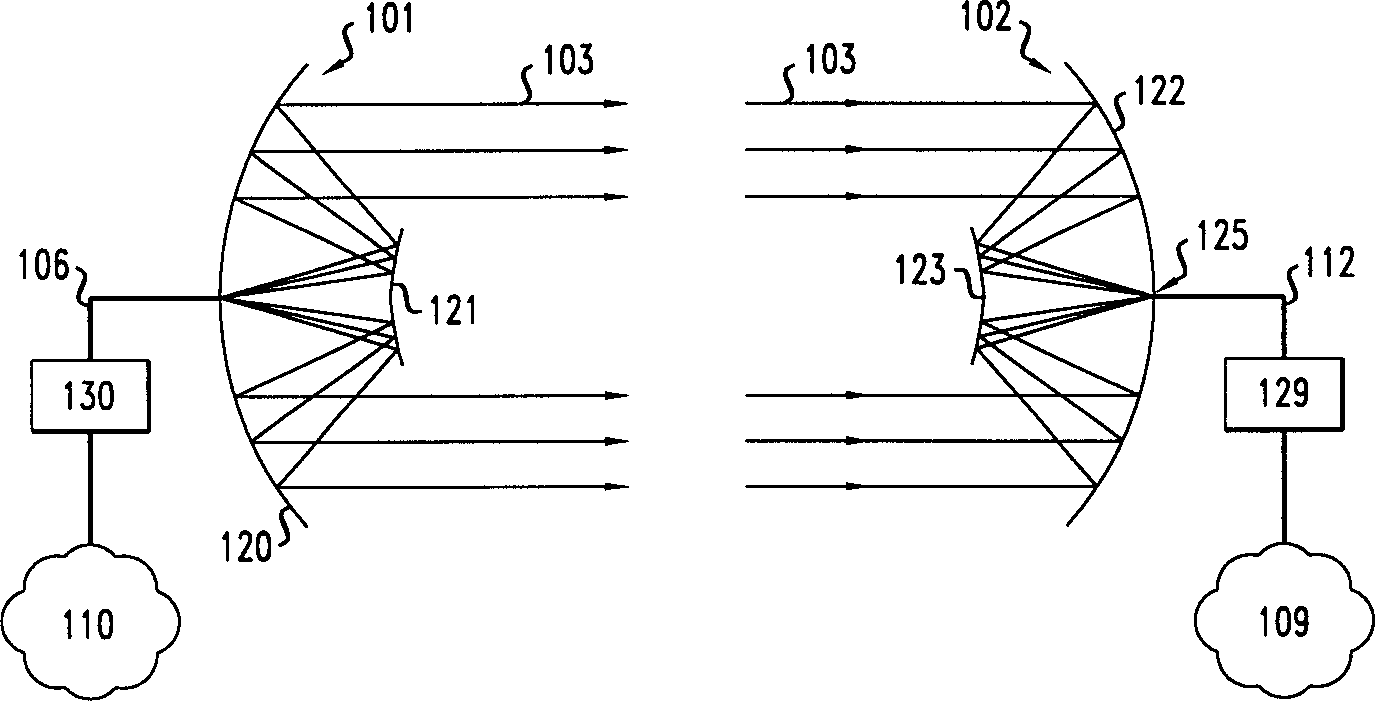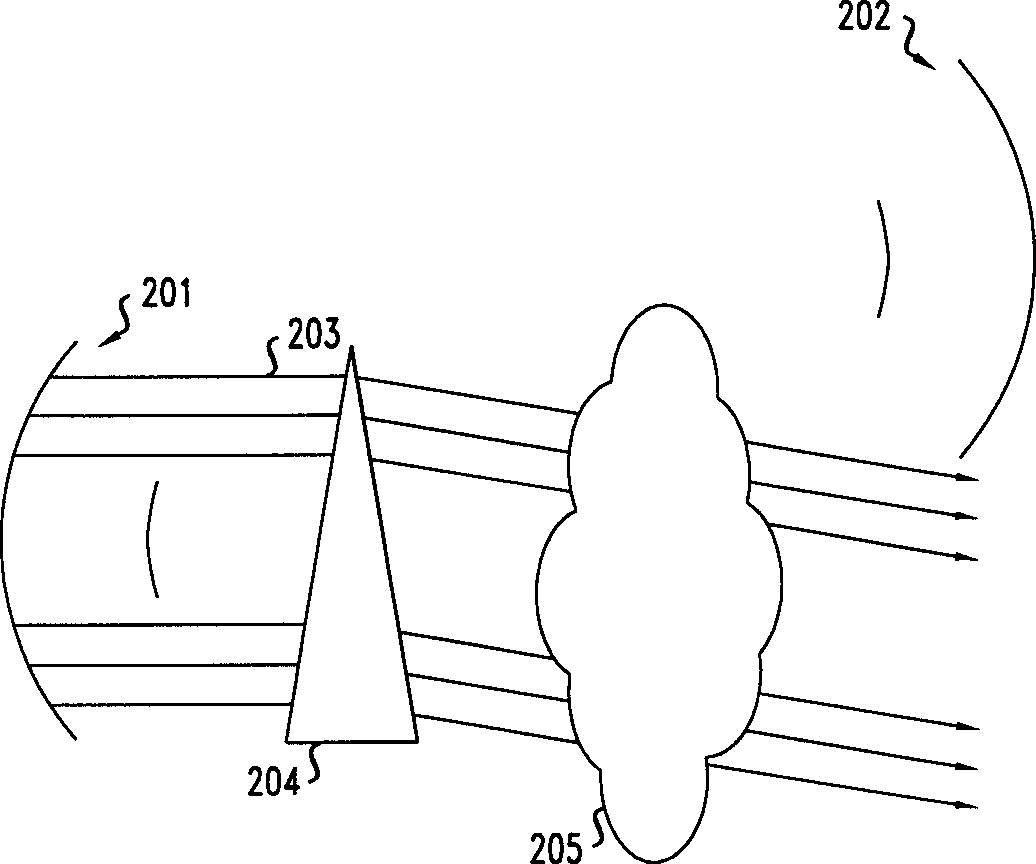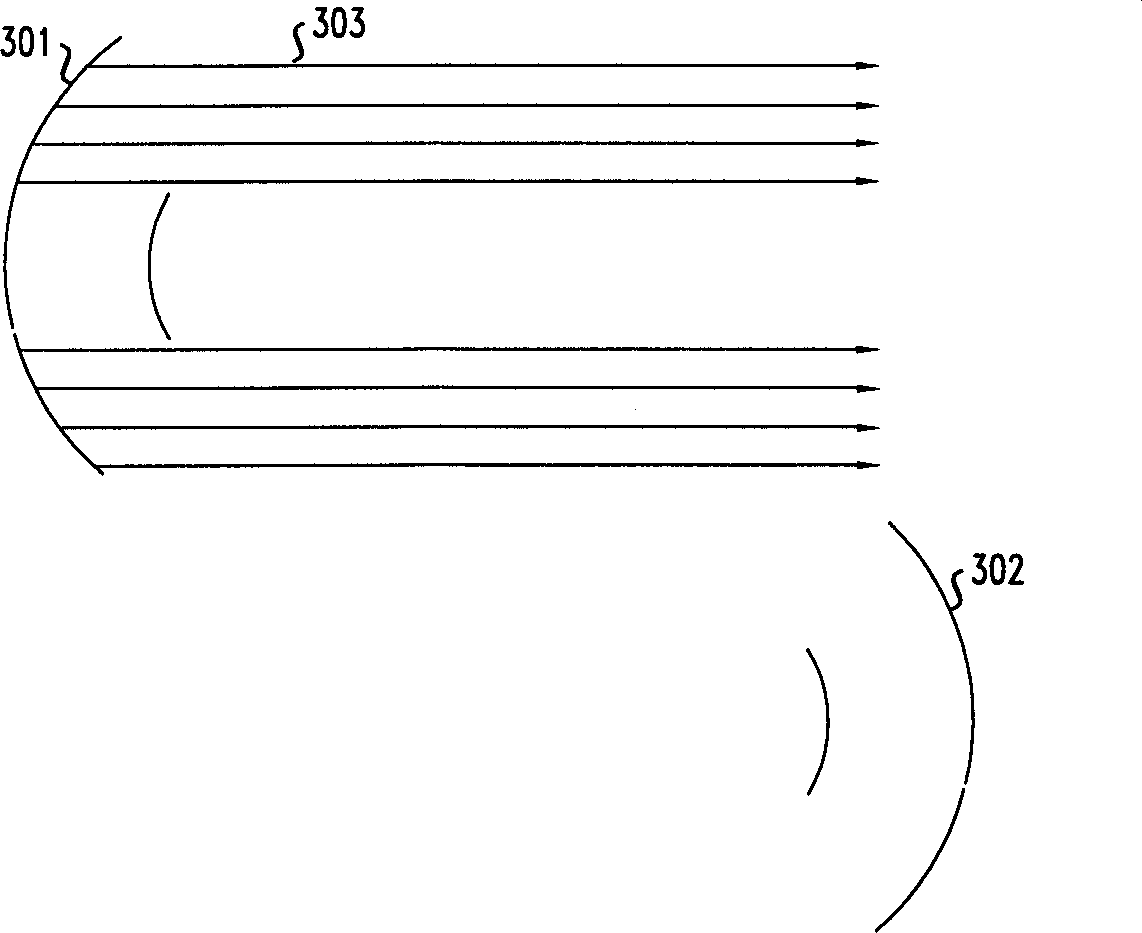Method and device for controlling received power level in free space optical communication system
A technology of receiving power and optical system, which is applied in the direction of free space transmission, transmission system, electromagnetic wave transmission system, etc., can solve the problem of excessively high light beam, and achieve the effect of reducing input power, reducing received power, and increasing cross-sectional area
- Summary
- Abstract
- Description
- Claims
- Application Information
AI Technical Summary
Problems solved by technology
Method used
Image
Examples
Embodiment Construction
[0014] figure 1 Two prior art telescope optical communication telescopes 101 and 102 in a free space optical communication system are shown during normal calibration operating conditions. A beam of light produced by laser 130 is modulated by data received from network 110 and transmitted through optical fiber 106 . The transmitting telescope 101 receives the modulated optical signal via the optical fiber 106 . Next, the primary mirror 120 and the secondary mirror 121 are optically imaged and emit a beam modulated so that the beam is incident on the focal plane 125 of the receiving telescope 102 . The receiving telescope 102 uses its optical system (including a primary reflector 122 and a secondary reflector 123 ) to focus the incident transmitted modulated light beam 103 onto the receiving optical fiber 112 located on the focal plane 125 of the receiving telescope 102 . The receiving fiber then sends the modulated optical signal to receiver 129 , which converts the optical s...
PUM
 Login to View More
Login to View More Abstract
Description
Claims
Application Information
 Login to View More
Login to View More - R&D
- Intellectual Property
- Life Sciences
- Materials
- Tech Scout
- Unparalleled Data Quality
- Higher Quality Content
- 60% Fewer Hallucinations
Browse by: Latest US Patents, China's latest patents, Technical Efficacy Thesaurus, Application Domain, Technology Topic, Popular Technical Reports.
© 2025 PatSnap. All rights reserved.Legal|Privacy policy|Modern Slavery Act Transparency Statement|Sitemap|About US| Contact US: help@patsnap.com



